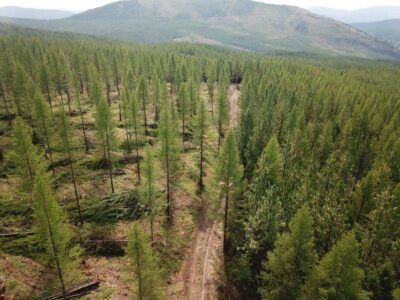Right on the Commerce Clause, wrong on the ESA

Cross-posted at CPRBlog.
As Rick noted earlier, the Ninth Circuit is now the fifth federal circuit court of appeals to reject a Commerce Clause challenge to the ESA. In San Luis & Delta-Mendota Water Authority v. Salazar, a Ninth Circuit panel upheld protection of the Delta smelt. I agree with Rick’s analysis of the Commerce Clause holding, but wanted to make two additional points. First, while a petition for certiorari is almost inevitable, it’s unlikely to be granted. But second, the portion of the opinion dealing with standing and ripeness misinterprets the ESA in a way that may cause headaches for environmental interests in the future.
First, I’m more confident than Rick seems to be that the Supreme Court will leave this case alone. The Court has already passed up several opportunities to address the application of the Commerce Clause to the ESA. It will do so again this time. Not only is there not a circuit split, there’s a remarkably strong consensus among the courts of appeal that the ESA can be constitutionally applied to protect intrastate species. There is not a clear consensus on rationales, and some tough doctrinal questions remain about the extent to which it’s appropriate to aggregate protection of the full range of species for purposes of evaluating the connection to interstate commerce. It wouldn’t shock me if the Court eventually decided to deal with those issues, but this case is not a good vehicle for exploring them. For one thing, the regulated activity in this case, irrigation deliveries to commercial farming operations, has a clear effect on commerce without any need for aggregation. More importantly, the only section of the ESA that has been or is likely to be applied to regulate irrigation deliveries through the Delta pumps is section 7, which requires consultation on federal actions which may adversely affect listed species. The federal government doesn’t need to show a connection to interstate commerce in order to impose procedural requirements on its own actions.
Second, in order to reach the merits of the constitutional claim, the Ninth Circuit panel had to find that the water user plaintiffs had standing and that their challenge was ripe. Unfortunately the panel tied itself in some unnecessary knots, and inaccurately described the statutory scheme.The confusion seems to stem from the way the claim was presented to the trial court. Plaintiffs initially asserted that both section 7 and section 9 were unconstitutional as applied to the Delta smelt. But as the litigation proceeded they focused on section 9. The trial court ruled that plaintiffs had abandoned their section 7 claim and could not bring a section 9 challenge. The Ninth Circuit mixed the two challenges together, holding that plaintiffs could bring a section 9 challenge because the Fish and Wildlife Service’s “coercive power to enforce ESA § 9 caused the Bureau to reduce water flows, which injured the Growers.”
That’s just not right. It’s section 7, not section 9, that gives FWS “coercive power” over other federal agencies. Section 7 requires that all federal agencies insure that actions they take, authorize, or fund are not likely to jeopardize the continued existence of listed species or adversely modify critical habitat. The Supreme Court ruled in Bennett v. Spear, 520 U.S. 154 (1997), that FWS’s biological opinions are sufficiently coercive that they can be directly challenged, even though they are not technically binding on action agencies. The Delta plaintiffs have an even stronger claim to standing to assert their section 7 claim, since they waited to bring their complaint until the Bureau of Reclamation had actually reduced water deliveries that followed those opinions.
It doesn’t necessarily follow, however, that plaintiffs should also be able to challenge application of section 9 to the Delta smelt, and the panel’s reasons for allowing that challenge are problematic. According to the panel,section 9’s prohibition on take was an “indirect cause” of the harm to the irrigators because FWS’s power to enforce section 9 “coerced the Bureau to comply with the Biological Opinion by reducing water flow.” I don’t buy it.
The Bureau definitely “takes” smelt at the pump, so in the absence of a biological opinion including an incidental take authorization the Bureau would be vulnerable to a section 9 suit (although I have my doubts that FWS could get the Department of Justice to bring that suit). But section 9 doesn’t add anything to section 7 here. The Bureau would be just as vulnerable to a section 7 suit if it didn’t consult or didn’t comply with the biological opinion.
That means the only constitutional claim the court had any reason to address is the section 7 claim. If section 7 is constitutional as applied to the Delta smelt (as I think it plainly is), then it doesn’t matter if section 9 passes constitutional muster or not. The Bureau would still have to reduce water deliveries. So the court should either have said that section 7 can be constitutionally applied to a wholly intrastate species or, if it agreed with the trail court that the section 7 argument had been abandoned, that should have been the end of the story.
Unfortunately, the panel was laboring under the mistaken belief that sections 7 and 9 are co-extensive, or even that section 7 has a narrower scope than section 9. In footnote 6, it wrote:
And, even if ESA § 7 is not invalidated, the Bureau would have no reason to comply with the no-jeopardy provision in ESA § 7—if an agency is permitted to “take” a particular species, then it would certainly be permitted to “jeopardize the existence” of that species.
Wrong on two counts. First, if section 7 is valid, the Bureau must comply with it notwithstanding the status of section 9. Courts conventionally assume that agencies will comply with the law. But in this case there’s also a ready enforcement mechanism. Interested citizens can compel compliance through the ESA, which allows citizen suits to enjoin “violation of any provision” of the ESA. In Bennett v. Spear the Supreme Court ruled that the ESA’s citizen suit provision doesn’t authorize a direct challenge to an FWS biological opinion, but that’s different than a challenge to an action that causes jeopardy. Even if the citizen suit provision somehow wouldn’t support a challenge to Bureau action, the Administrative Procedure Act, which requires that reviewing courts set aside agency action which is “arbitrary, capricious, an abuse of discretion, or otherwise not in accordance with law,” would.
And second, it’s not true that if an agency could lawfully “take” the Delta smelt it could also lawfully cause its extinction. Quite the contrary. Take, which might just mean temporarily capturing an individual, is less serious than jeopardy, which means reducing the likelihood that the species will persist. To get permission to take a listed species, federal agencies and private parties alike must show that the take won’t cause jeopardy. To get permission to cause or authorize jeopardy, federal agencies have to go to the God Squad.
The panel’s misunderstanding of the ESA wasn’t crucial to the outcome of this case. The problem it presents is that it could be read to say that section 7’s consultation duty doesn’t apply at all without proof of a take, an interpretation which could substantially narrow section 7. Hopefully next time the Ninth Circuit has to grapple in depth with section 7 it won’t be misled by the careless language of this opinion.








Reader Comments